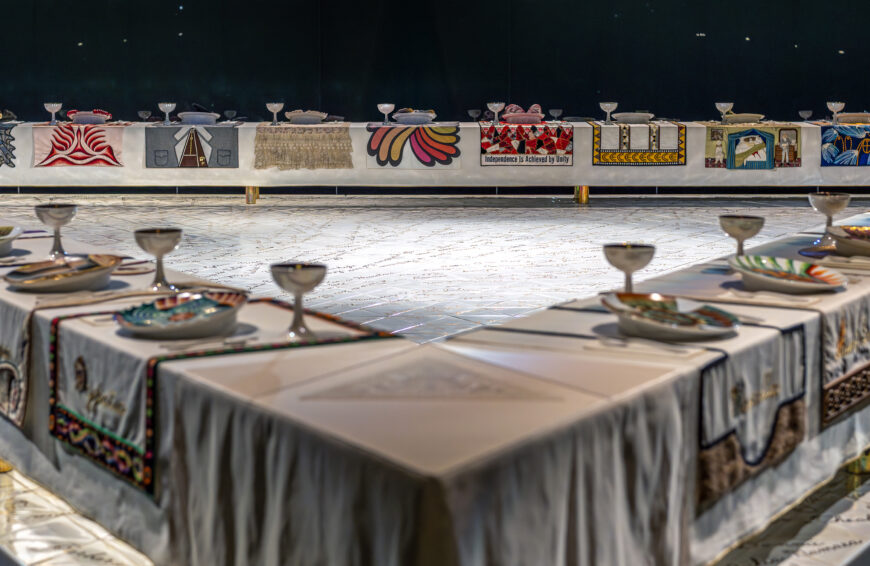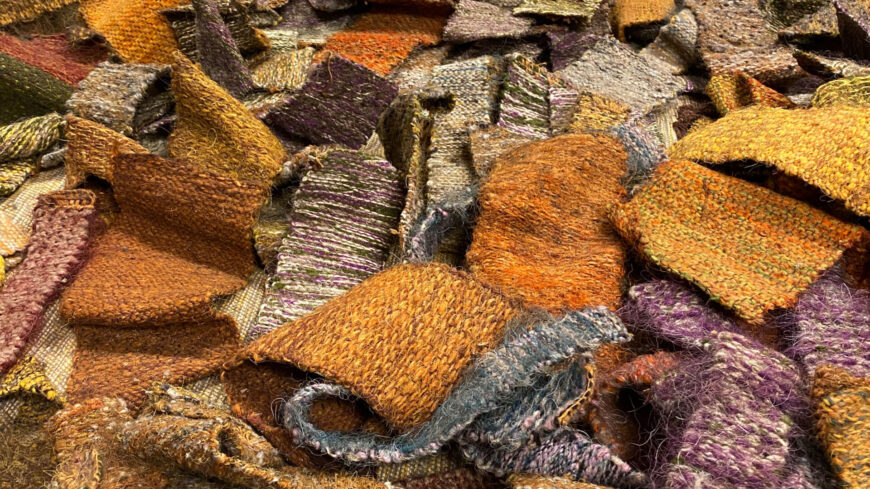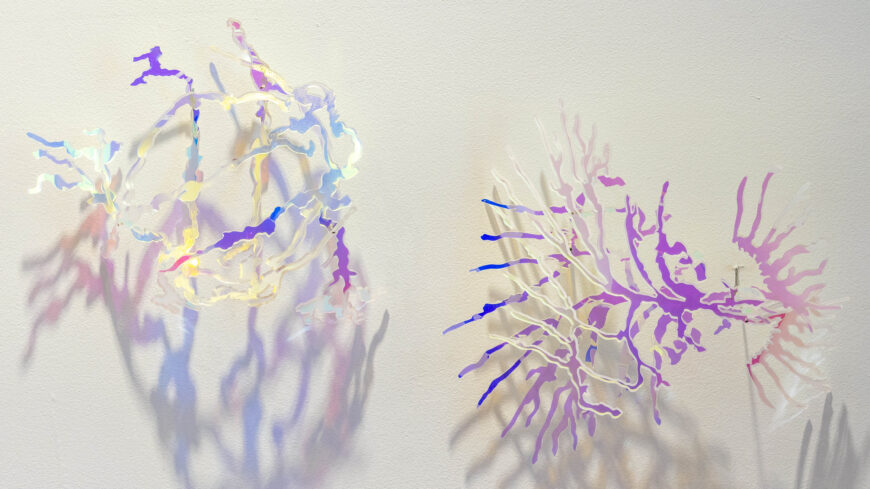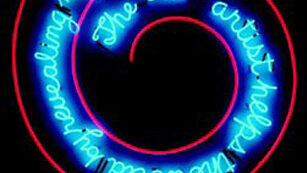Mix, Stir, Pour: a feminist action.
Barbara Zucker, Mix, Stir, Pour (White Floor Piece), 1972, poured plaster, multiple units, variable dimensions (collection of the artist, © Barbara Zucker, all rights reserved), a conversation with the artist and Steven Zucker; note Barbara Zucker is Steven Zucker’s ex-stepmother







